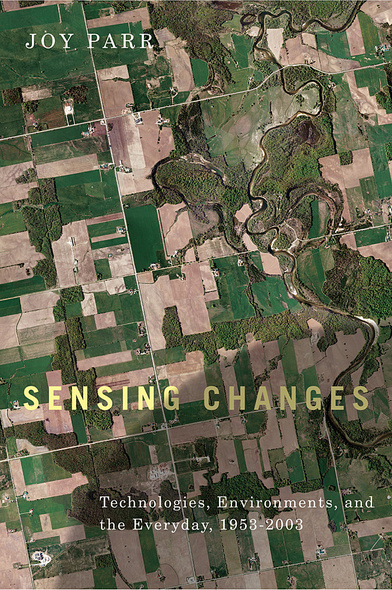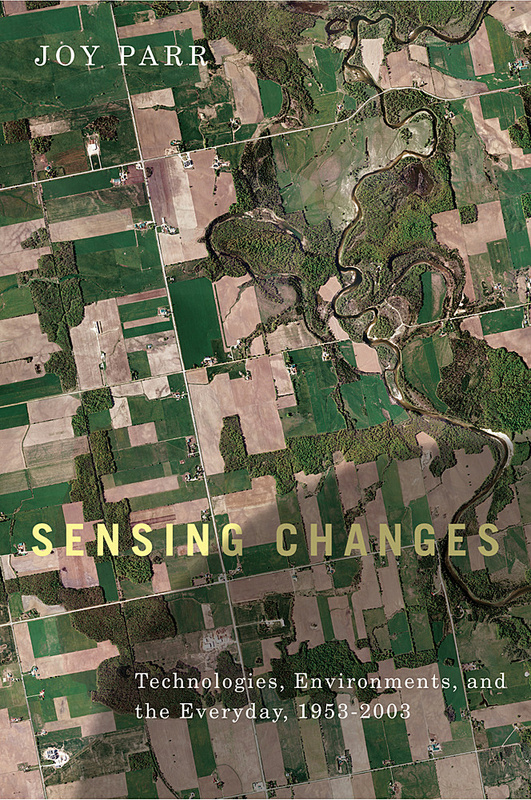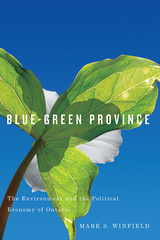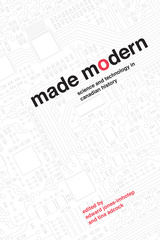
Sensing Changes
Technologies, Environments, and the Everyday, 1953-2003
Our bodies are archives of sensory knowledge and laboratories in which to retool our senses and practices in response to changing circumstances. If global environmental changes continue at an unsettling pace, how will we make sense of the cascade of new normals, where the air, land, and water around us are no longer familiar?
Joy Parr, one of Canada’s premier historians, tackles this question by exploring situations in the recent past when state-driven megaprojects and regulatory and environmental changes forced people to cope with radical transformations in their work and home environments. The construction of dams, chemical plants, nuclear reactors, and military training grounds; new patterns in seasonal rains; and developments in animal husbandry altered the daily lives of ordinary people and essentially disrupted their embodied understandings of the world. Familiar worlds were transformed so thoroughly that residents no longer knew the place where they lived or, by implication, who they were.
Sensing Changes and its associated website at http://megaprojects.uwo.ca, which features creative, analytical works that further deepen the book’s interpretations, make a key contribution to environmental history and the emerging field of sensory history. This study offers a timely and prescient perspective on how humans make sense of the world in the face of rapid environmental, technological, and social change.
Sensing Changes is essential reading for environmental historians and historians of technology, the senses, and the everyday. It will be of interest to anyone seeking new approaches to the past or new ways to cope with a rapidly changing world.
Awards
- 2011, Winner - Sidney Edelstein Prize, Society for the History of Technology
- 2011, Shortlisted - Sir John A. Macdonald Book Prize, Canadian Historical Association
- 2015, Shortlisted - The François-Xavier Garneau Medal, Canadian Historical Association
- 2011, Winner - Canada Prize in the Social Sciences, Canadian Federation for the Humanities and Social Sciences
The New Media component of Sensing Changes is a wonderful illustration of how we can and should engage our students in multi-sensory ways and how we, as historians, must move beyond privileging the written word.
Historian and geographer Joy Parr has written an extraordinary book…Sensing Changes will make important contributions to the field of sensory studies and that other readers, approaching their own topics in diverse locations and from various disciplinary backgrounds, will, like this reviewer, find edification and inspiration in the pages of this remarkable book.
Sensing Changes stands as a pioneering contribution to Canadian historical writing. Through half-a-dozen carefully chosen, closely textured case studies, Parr reveals the ‘gritty specificity’ of history as she unfolds an argument for the importance of understanding how bodies adapt(ed) to changing times, places, and practices.
Joy Parr is a wonderful storyteller, and the tales in this book are as harrowing – dealing, as they do, with displacement, danger and death – as they are engaging and edifying. I was riveted by her descriptions of the disruption visited on the social and sensory lives of the people affected by these mega-projects, and by the resiliency they manifested in the face of radical environmental changes.
In this stunningly creative book, Joy Parr asks how twentieth-century ‘mega-projects’ – dams, power plants, canals, military bases – have transformed local people’s most intimate experience of themselves and their environments. The examples are Canadian but the insights are global. This is a must-read for anyone who wants to understand how our modern technology builds our very bodies.
Foreword: "Now I am Ready to Tell How Bodies are Changed Into Different Bodies” / Graeme Wynn
The Megaprojects New Media Series / Jon van der Veen
1 Introduction – Embodied Histories
2 Place and Citizenship – Woodlands, Meadows, and a Military Training Ground: The NATO Base at Gagetown
3 Safety and Sight – Working Knowledge of the Insensible: Radiation Protection in Nuclear Power Plants, 1962-92
4 Movement and Sound – A Walking Village Remade: Iroquois and the St. Lawrence Seaway
5 Time and Scale – A River Becomes a Reservoir: The Arrow Lakes and the Damming of the Columbia
6 Smell and Risk – Uncertainty along a Great Lakes Shoreline: Hydrogen Sulphide and the Production of Heavy Water
7 Taste and Expertise – Local Water Diversely Known: The E. coli Contamination in Walkerton 2000 and After
8 Conclusion: Historically Specific Bodies
Notes
Select Bibliography
Index






